Chapter: 11 th 12th std standard Bio Botany plant tree Biology Higher secondary school College Notes
Hydrophytes And Classification of Hydrophytes
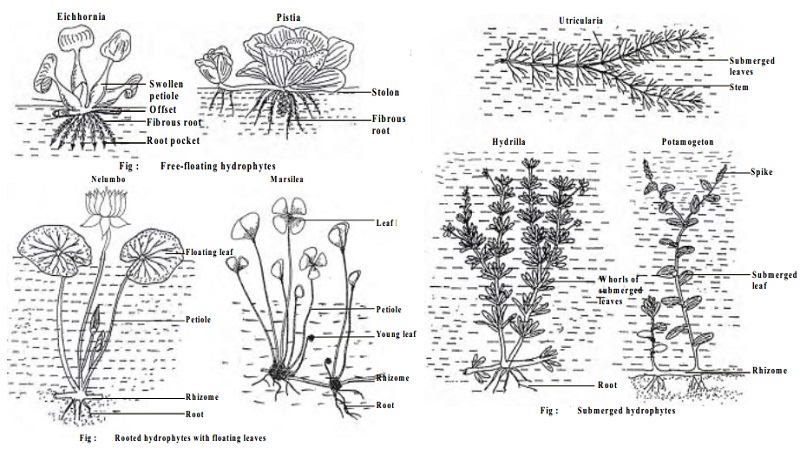
Hydrophytes
Hydrophytes are plants that grow in regions, where, there is plenty of water supply (ie. Pond, pool, lake, river and marshes ) or wet soils.
The organisms found in aquatic habitats i.e. sea (marine habitat), lakes and ponds (lentic habitats) and streams and rivers (lotichabitats) experience a variety of physical factors. These include, the availability of oxygen and light, pressure fluctuations, resistance to motion, salt concentration, etc. To adjust to the prevailing conditions, aquatic plants have various types of adaptations.
Classification of Hydrophytes
According to their relation to water and air, the hydrophytes are grouped into four categories.
1. Free floating hydrophytes.
2. Floating but rooted hydrophytes.
3. Submerged hydrophytes (floating and rooted).
1. Free floating hydrophytes
These plants float freely on the surface of water but are not rooted in the soil. These plants are in contact with both water and air(e.g. Eichhornia, Pistia, Wolffia, and Lemna)
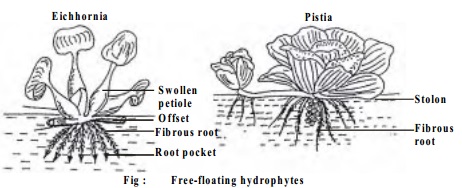
2. Floating but rooted hydrophytes
These hydrophytes are rooted in the mud but their leaves and flowering shoots float on the water surface. E.g. Victoria regia, Nymphaea, Nelumbium and Marsilea.
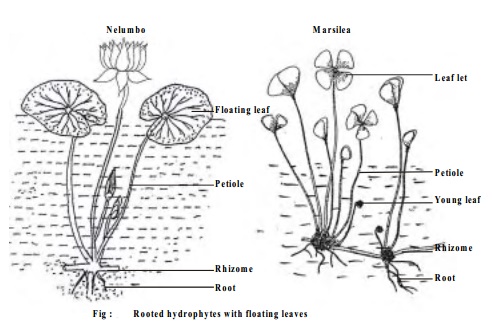
3. Submerged hydrophytes (floating)
Plants which grow below the water surface and not in contact with atmosphere are called free floating submerged hydrophytes. E.g. Ceratophyllum, and Utricularia.
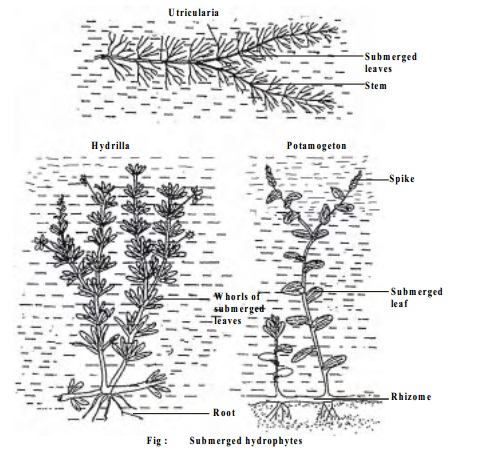
Submerged hydrophytes (Rooted)
These plants are completely immersed in water and rooted in the mud. E.g. Hydrilla, Vallisneria, Potamogeton etc.,
4. Amphibious Hydrophytes
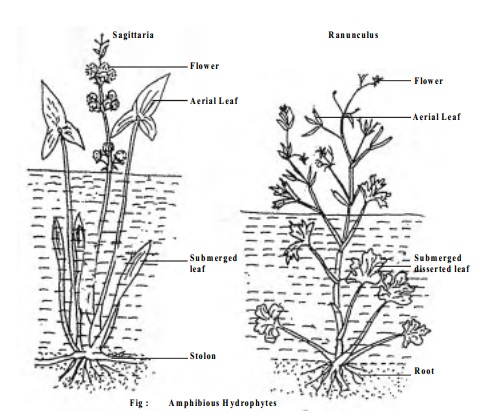
These plants grow in shallow waters. Their roots, some part of stems and leaves are submerged in water. But some flowering shoots spring well above the water surface.
These plants are adapted to both aquatic and terrestrial modes of life. The aerial parts of these amphibious plants show mesophytic characters, while the submerged parts develop true hydrophytic characters. e.g. Limnophylla heterophylla, Typha, Sagittaria etc.,
Related Topics